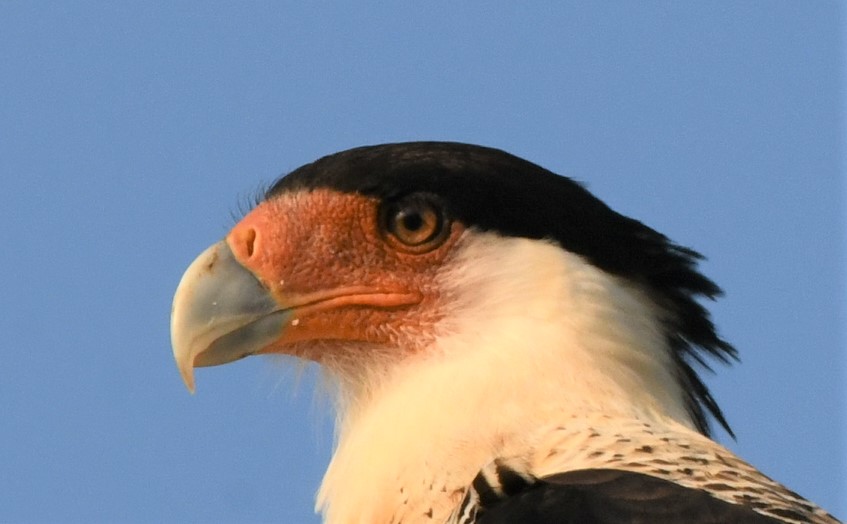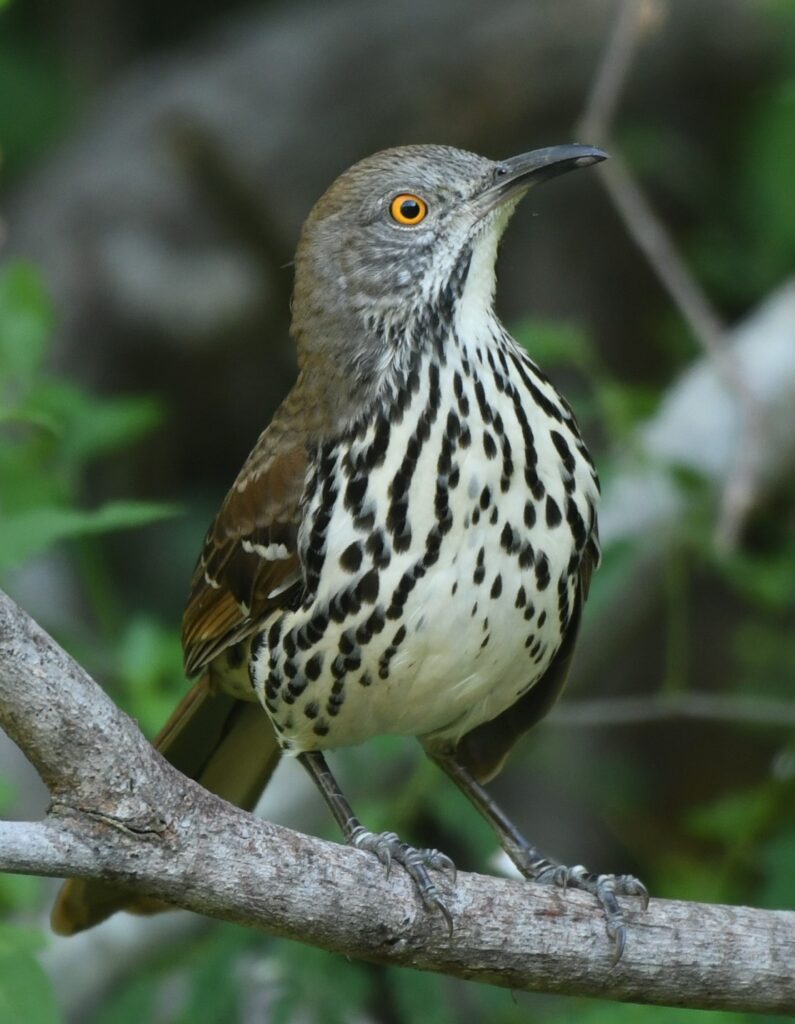
TEXAS 26 September – 6 October 2020 Callyn Yorke
Introduction
During autumn at the south pole of Texas, I expected relatively mild weather and lots of birds. On both counts, I was not disappointed. Most of the time was spent in the lower Rio Grande Valley, based in the rapidly growing township of McAllen, Hidalgo County.

My friends, Deborah and Fred had recently built a new home in an upscale suburb of McAllen. Deb, a retired colleague in the Math Department of Antelope Valley College, Lancaster, CA, is an avid birder and former US Navy recon pilot. She had also taken my UCLA Extension birding class a few years earlier. Her husband, Fred, an Austin, Texas native, now retired, earned high honors as a Navy test pilot. Both are well travelled nature enthusiasts and were the perfect hosts for a whirlwind birding tour of the Rio Grande Valley (RGV).
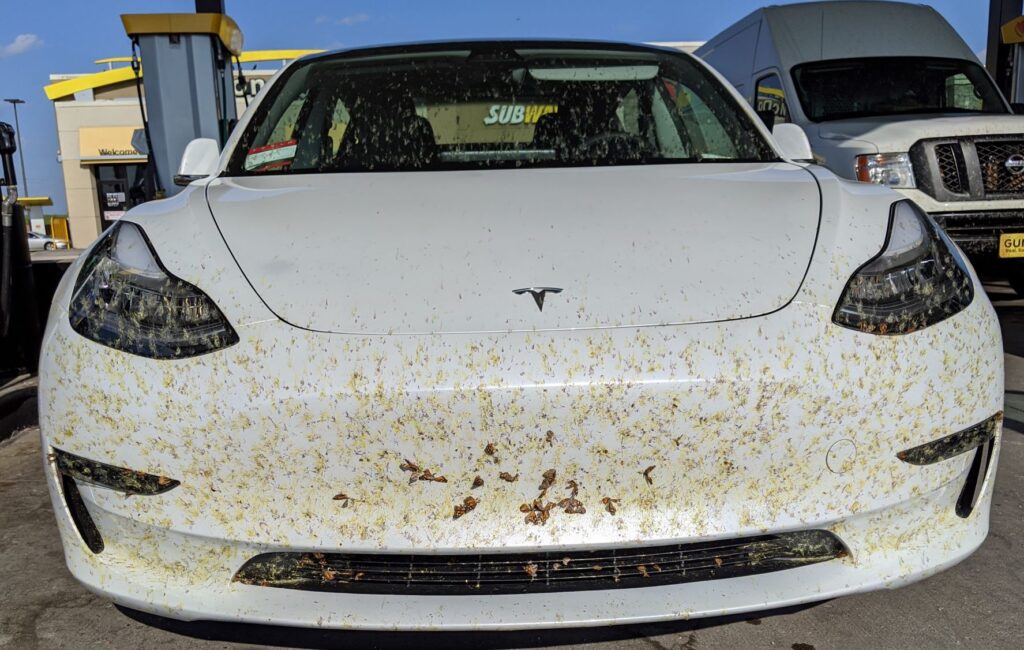
I underestimated by a day or so, the time needed to drive from my home in northern Los Angeles County to the RGV (about 1,600 miles). When I finally rolled into McAllen, it was well past dark and my car was badly in need of a wash. Along the route southward from San Antonio, I hit a blizzard of migrating snout butterflies (Libytheana carinenta), similar to the widespread, migratory Painted Lady (Vanessa cardui). Several times, a yellow stew of insect remains on my windshield was heavy enough to require stopping at a service station. Other drivers were forced off to the side of the highway after making the mistake of trying to clean up the mess in transit using their windshield wipers. For at least 200 miles and about four hours of driving, the biological spectacle continued unabated. The image of pulling up to Deb and Fred’s home in a car befitting a National Lampoon vacation film, was unacceptable. At the last minute, I found a convenient drive-through car wash in their neighborhood, and after scrubbing the front of the car with the station’s frayed windshield sponge, managed to emerge with the car looking almost new. That was a relief, because their beautiful new home, including the driveway, was immaculate.
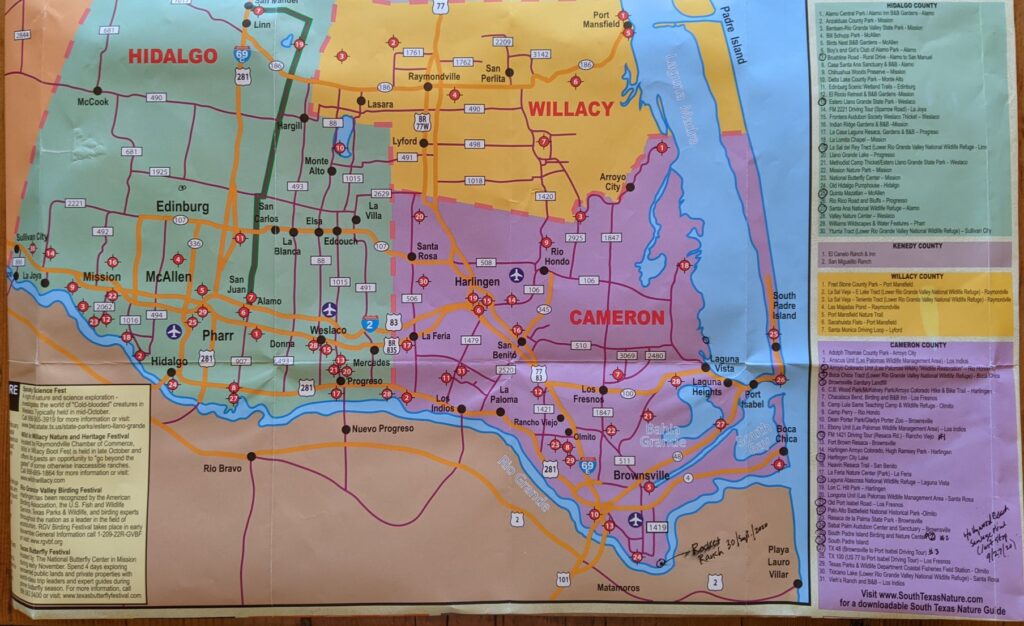
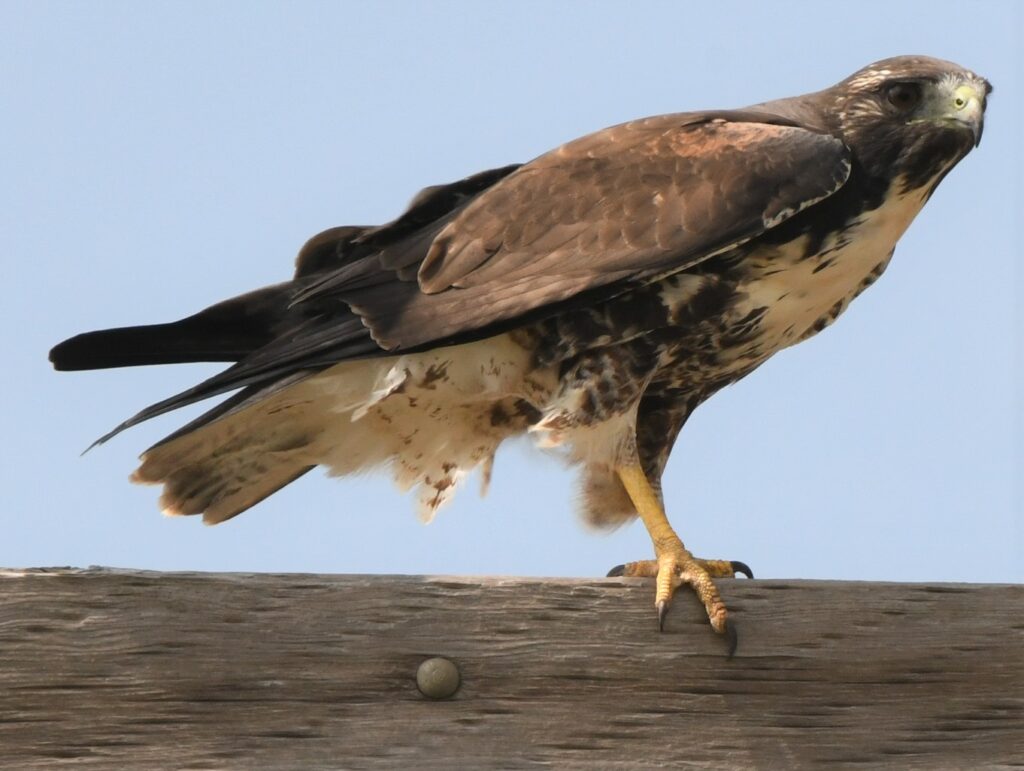
Deb had prearranged several outings for us (Fig. 1), including one with Bill Clark, a well-known raptor biologist. Bill has been studying hawks and falcons in the RGV for nearly twenty years and probably knows as much about their habits and distribution as anyone else in Texas. Highlights of the day’s drive through large portions of Cameron and Hidalgo Counties, included, White-tailed Hawk (relatively scarce), Gray Hawk (nesting in Harlingen residential communties), Swainson’s Hawk (a large migratory flock attracted to a field being ploughed) and a nesting pair of Aplomado Falcon.
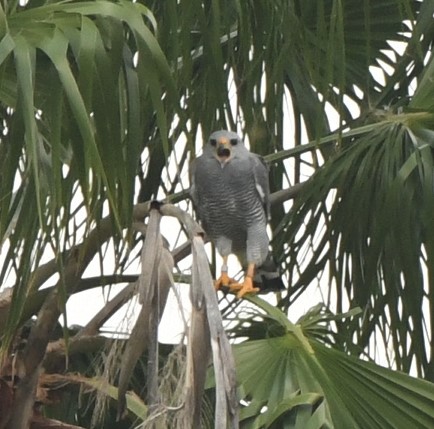
Bill and his graduate students had been tracking several GPS-tagged Gray Hawks, in an effort to monitor their nest success, abundance and distribution. Curiously, these hawks seem to tolerate humans better than most other birds of prey, often nesting in the same large trees in Harlingen yards, year after year.
Gray Hawk is essentially a bird of the New World tropics, who’s range barely reaches the USA in southern Arizona and the RGV. Remarkably, an immature Gray Hawk appeared in November 2012 near Santa Barbara, CA, establishing the first State record for that species.
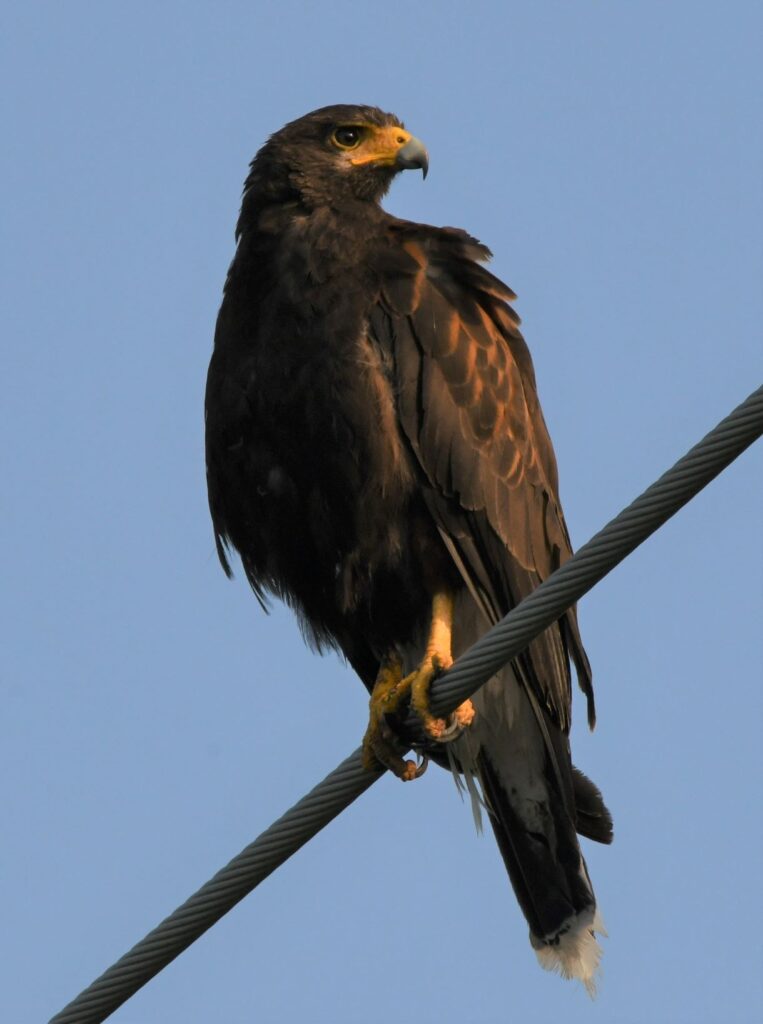
Yet, the award for the most widespread and human-tolerant hawk in the RGV must go to the Harris Hawk. Nearly every one-mile stretch of utility line along roadways supported one or two of these handsome raptors. Bill’s group has also been tracking many of these birds to help clarify their distribution and abundance.
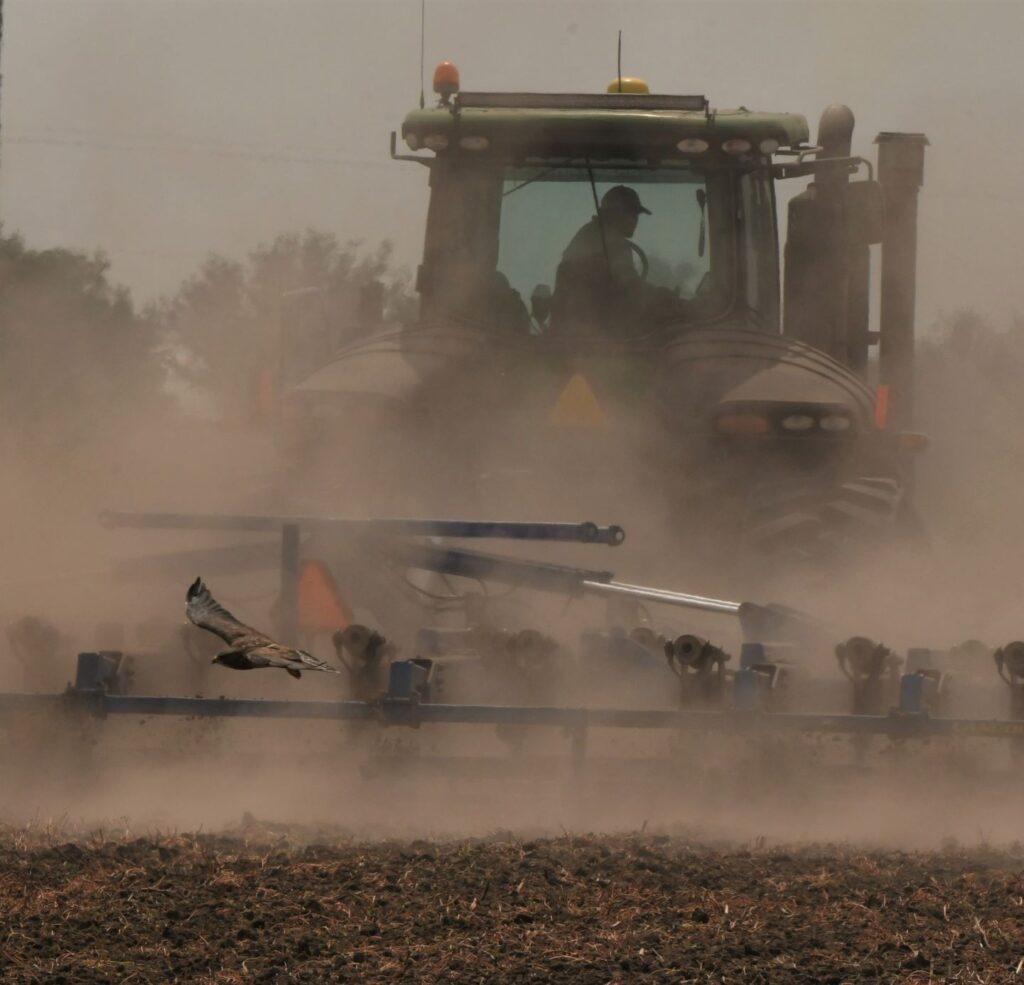
While driving on backroads through farmland, we spotted a kettle of perhaps eighty Swainson’s Hawk, circling above a field being ploughed. Some of the birds were on the ground; a few of them were following the plough as it generated clouds of dust, partially obscuring our view. Evidently, insects (adult and larvae) were being disturbed by the plough, which had attracted these highly gregarious, migratory raptors.
Our search through the many open fields of the Laguna Atascosa Wildlife Refuge, finally produced our only sighting of Aplomado Falcon.
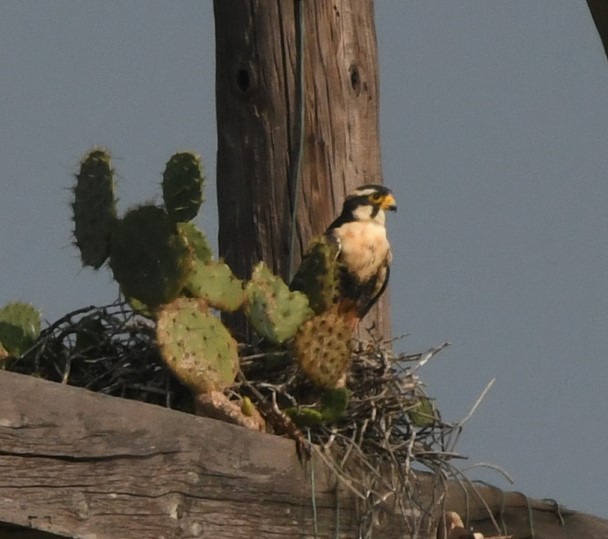
A pair was staying close to an apparent nest, located on a crosspiece of a wooden electric utility frame. The nest had a clump of prickly pear ‘paddle’ cactus growing out of it adventitiously, presumably as a result of seed deposition by frugivorous birds. Evidently, this pair of Aplomado Falcon, possibly descendants of birds re-introduced in 1995, represents one of only two resident populations in the country.
On another day, our tour of the RGV included a brief, midday visit to South Padre Island, a popular destination for college students during spring break. Deb introduced me to a couple of good birding locations. One of those was a reclaimed vacant lot in a business district near the main street through town.
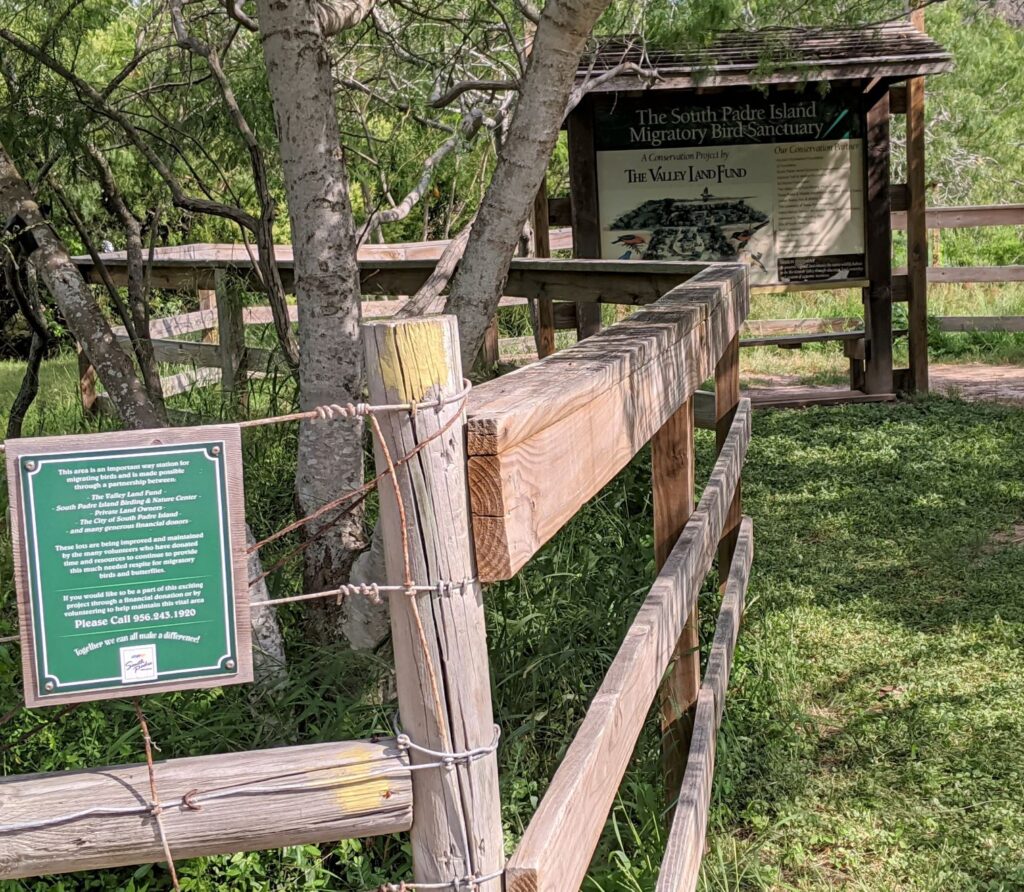
A group of local conservationists had persuaded several agencies to purchase the land and restore it with native vegetation designed to attract birds. When we arrived at 0930 hrs., the air temperature was already in the mid-eighties, yet a few migrant warblers, e.g. Nashville, Wilson’s and Chestnut-sided were still active in the shady garden of the reserve.
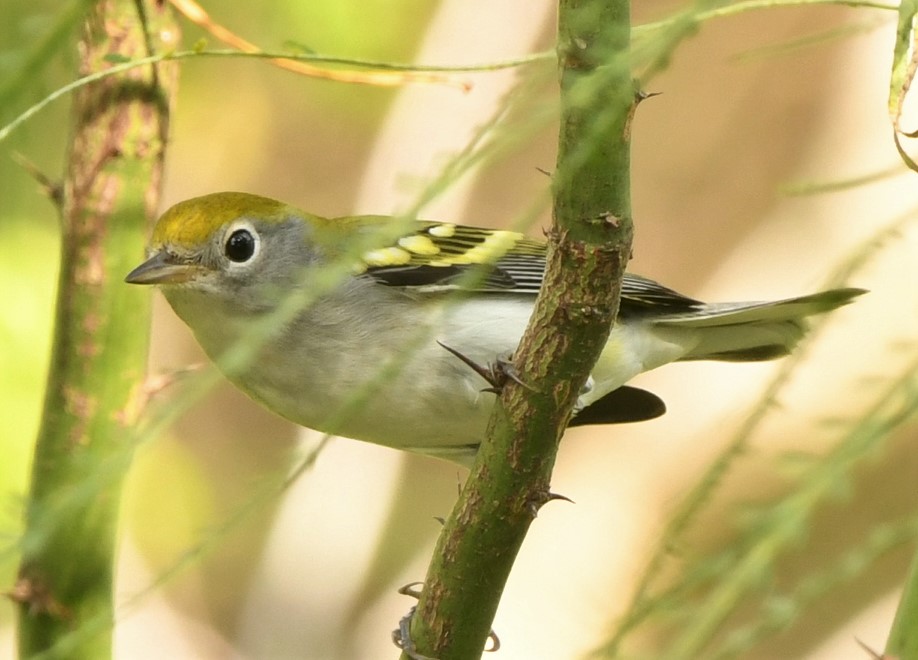
We stayed for an hour and observed about a dozen species in and around the sanctuary. Nearby, the city convention center (closed during the COVID-19 pandemic) and surrounding coastal habitats (coastal scrub, gardens,
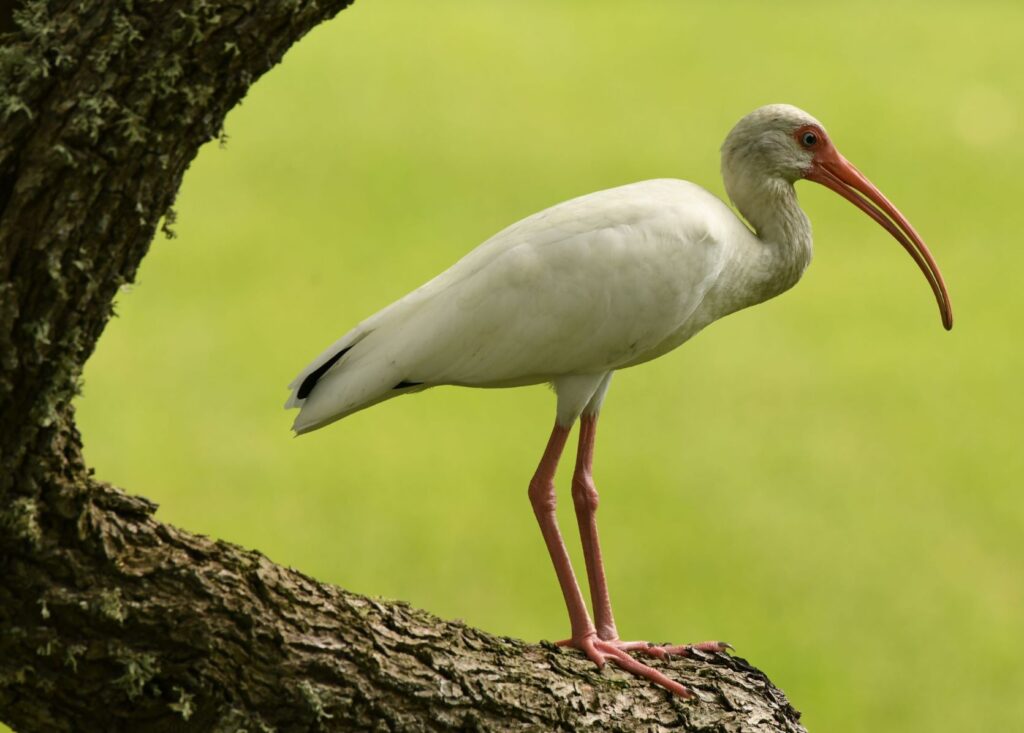
mangrove, salt marsh, shoreline and open water), provided an opportunity for close-up views of common water birds of south Texas. We strolled out on a boardwalk through a well-developed mangrove, looking back on the lagoon and shoreline, which were largely inundated at high tide. Among the most easily seen species were at least ten Tricolored Herons and several White Ibis.
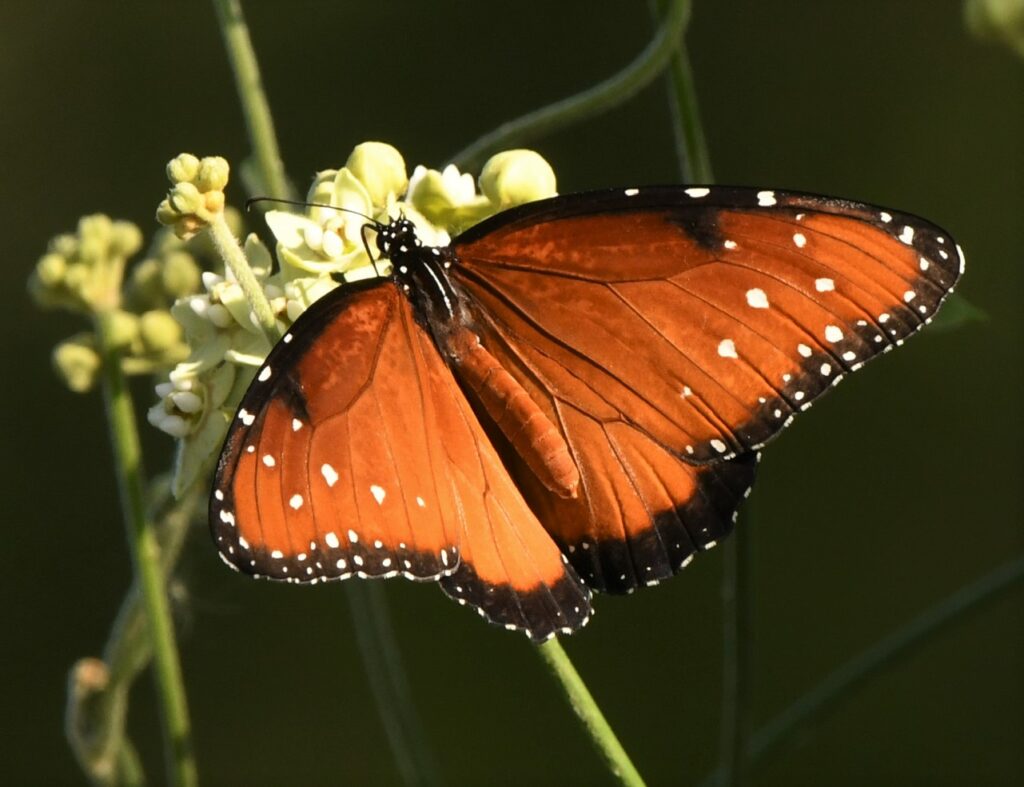
Our itinerary for the RGV included several popular state wildlife refuges. Among the best for viewing birds were Estero Llano and Santa Ana, both in Hidalgo County. The latter location was especially productive for two birds I had hoped to see, which do not normally occur elsewhere in the US, Green Jay and Altamira Oriole.
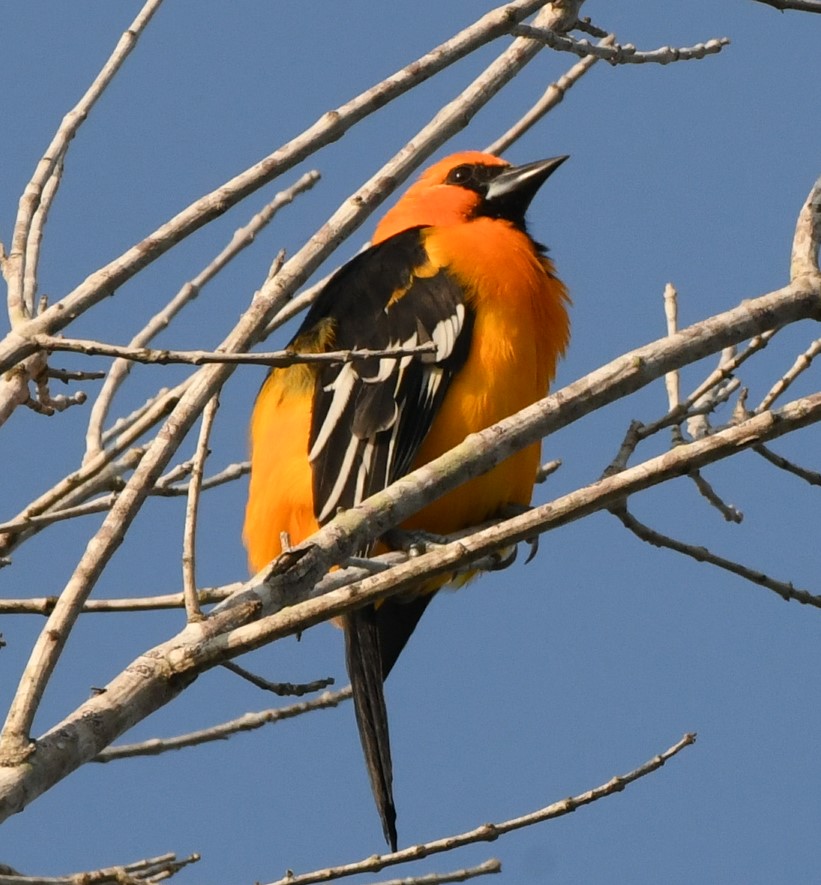
Both species were readily found in the heavily wooded sections of the Santa Ana Wildlife Refuge, only a short walk from the visitor center.
The juxtaposition of several vegetational communities at Santa Ana NWR (e.g. riparian woodland, freshwater and brackish marsh, lake, grassland and thorn scrub) provided habitat for a great diversity of resident and migratory birds.
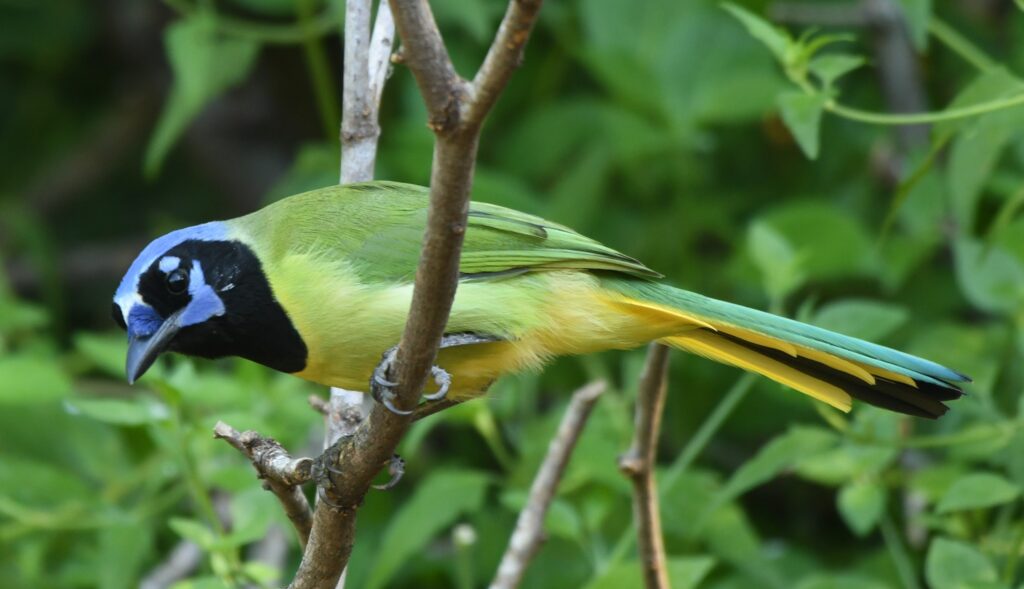
For a change of pace, one day we spent visiting a delightful couple of local birders, Billy and Sue.
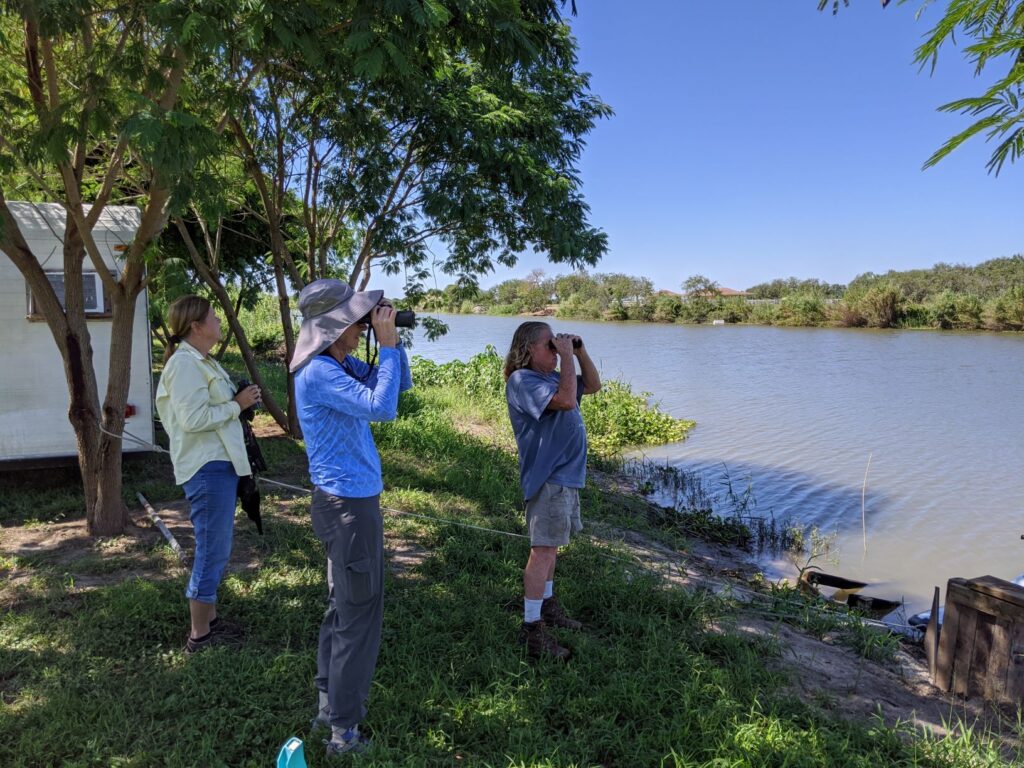
Their residence in Rio Hondo, off Route 106, Cameron County (Fig. 1), had been set up as a natural history garden with multiple bird feeding stations and viewing areas. There, we were treated to close-up views of both Long-billed and Curve-billed Thrasher, punctuated by a nearly perfect photo ops of Green Jay.
Billy and Sue accompanied us to several birding spots in the Brownsville area, including David Santalina’s Rocket Ranch on the banks of the Rio Grande River (a southerly bend in the river yields a northeastern view of Mexico, (Fig. 1, circa #24), and a lagoon next to Boca Chica NWR
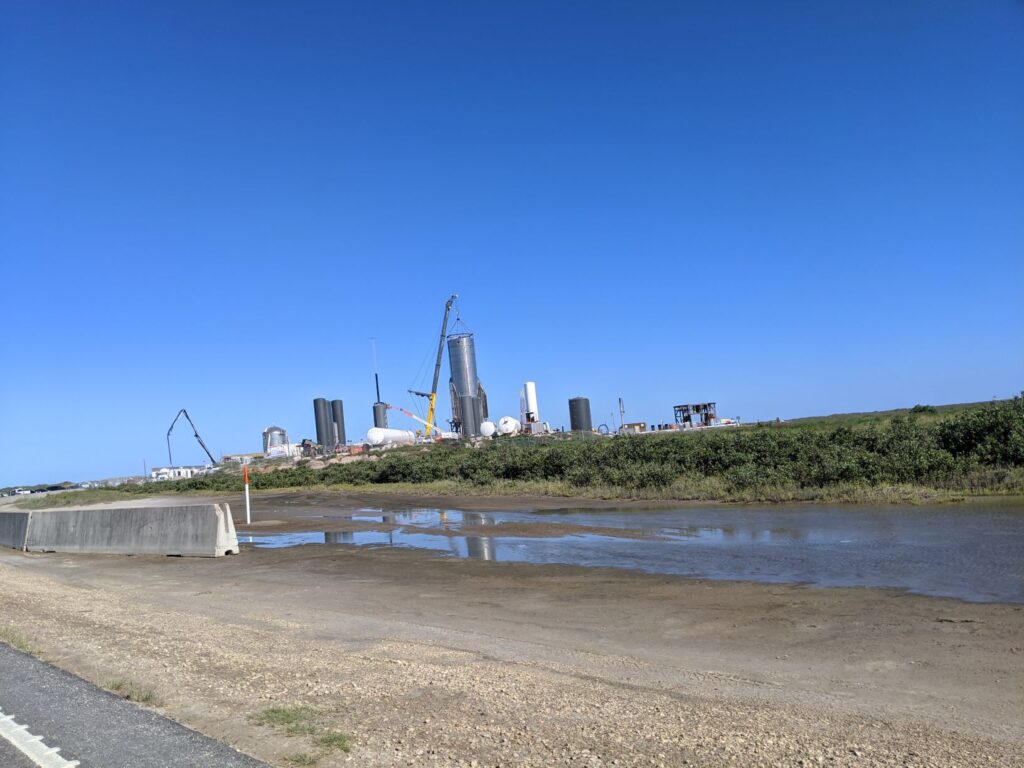
overlooking Elon Musk’s controversial Space X facility (Fig. 1, #4) Evidently, fuel spills and other contaminants associated with Space X, has prompted protests by local environmental groups trying to preserve what remains of the unspoiled coastline.
The diversity of habitats and birding locations in the RGV is impressive. At least sixty-one sites in Hidalgo and Cameron County are known to birders (Figure 1). Additionally, an unexpected treat was seeing a large, lively colony of Green Parakeet (Psittacara holochlorus) occupying a building (Texas Commercial Bank) in downtown Brownsville.
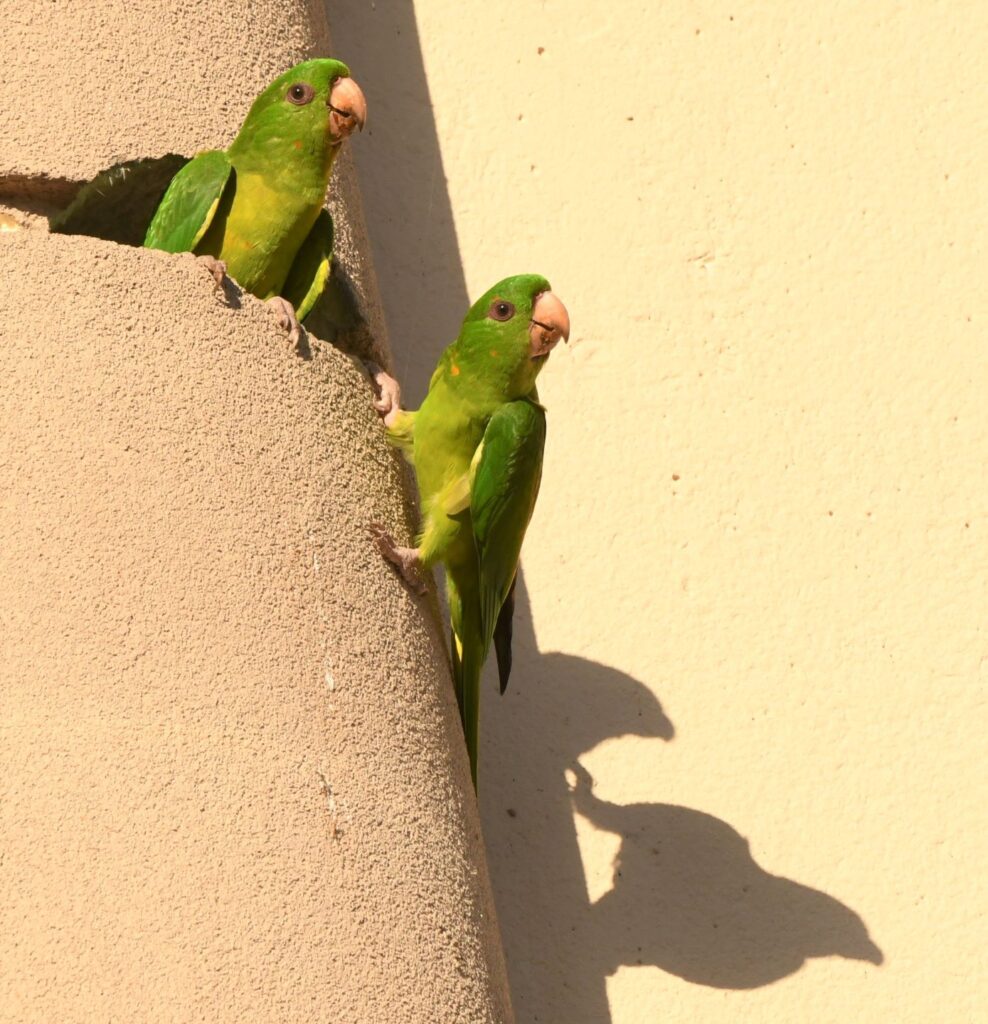
This species, endemic to northeastern Mexico, has become established here as a breeding population. Several pair were occupying cavities excavated in the styrofoam siding of the building.
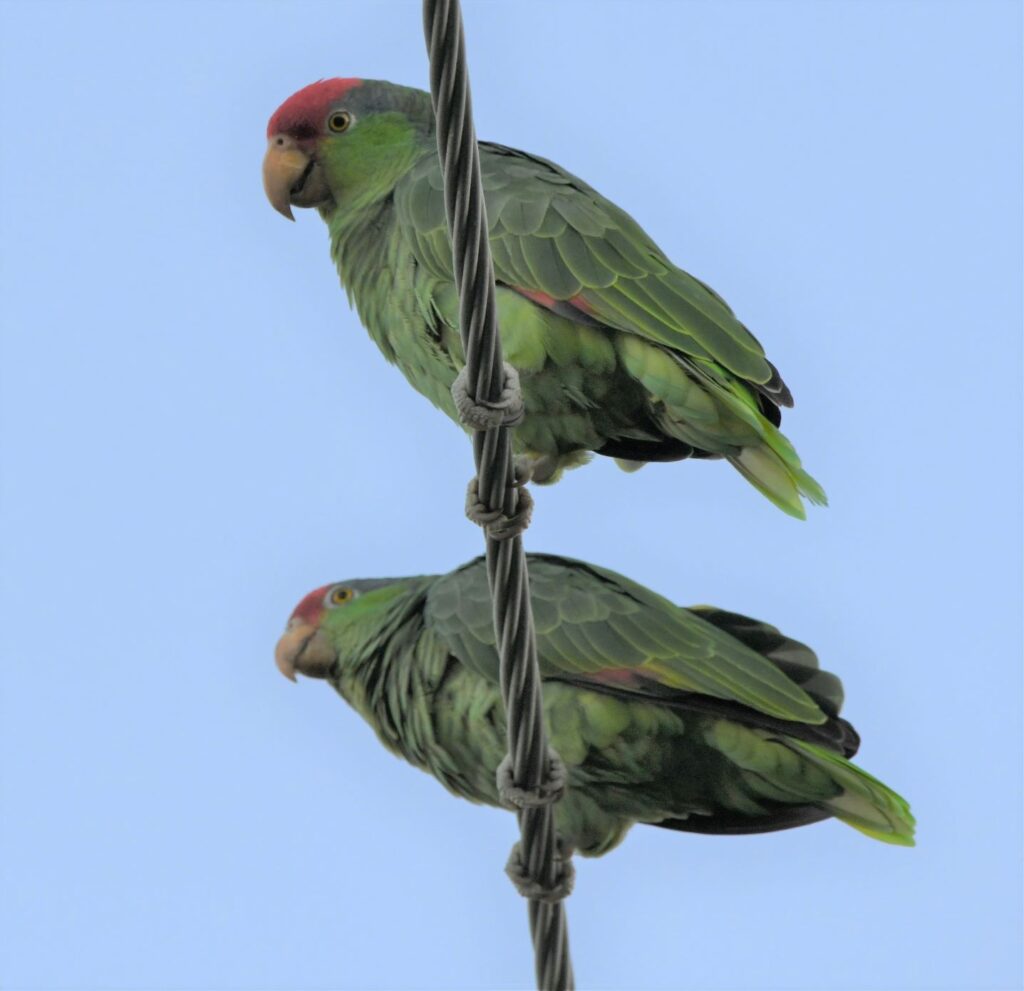
Nearby, in Oliviera City Park, Brownsville, we enjoyed a late lunch on a picnic bench beneath large eucalyptus trees and utility lines supporting a highly vocal, evening roost of Red-crowned Parrot (Amazona viridigenalis), Red-lored Parrot (Amazona autumnalis), Yellow-headed Parrot (Amazona oratrix) and Lilac-crowned Parrot (Amazona finschi). Except for the Red-crowned Parrot and Green Parakeet, which occur within the possibility of range expansion and colonization of south Texas, all of these birds are escapees from the pet trade and/or their descendants.
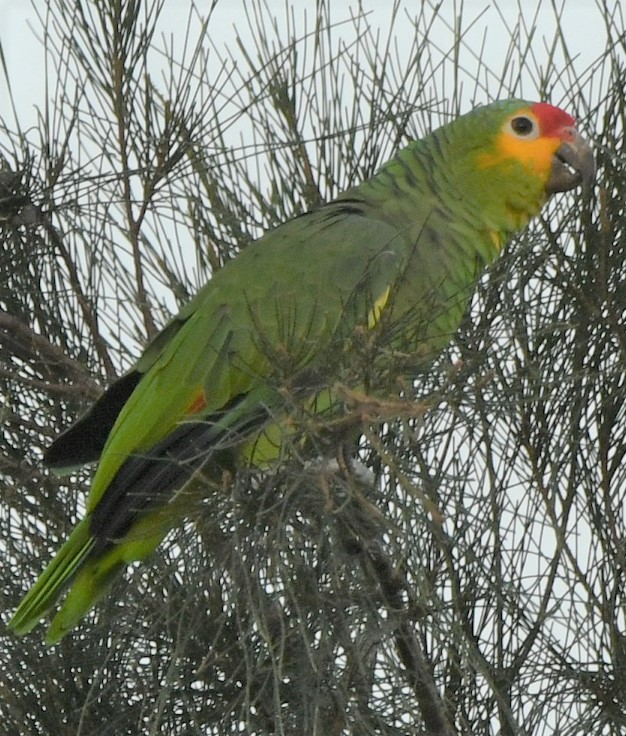
Evidently, the presence of fruiting trees and nesting opportunities in Brownsville and adjacent towns, supports viable populations of exotic parrots, which in the case of some species, e.g. Red-crowned Parrot and Yellow-headed Parrot, are endangered in their native habitats outside the USA.
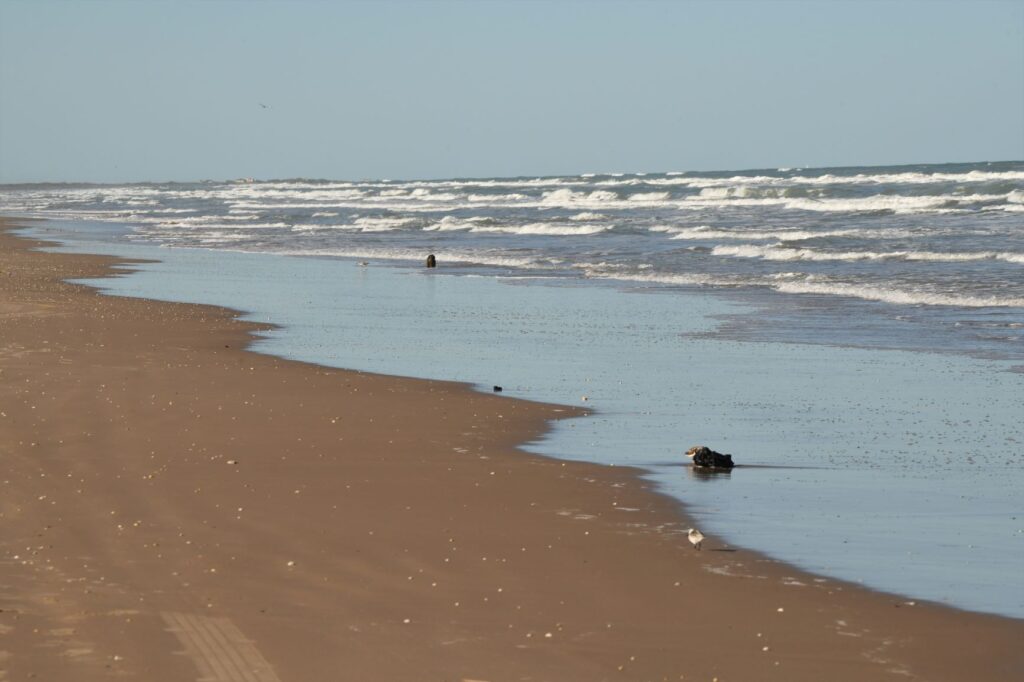
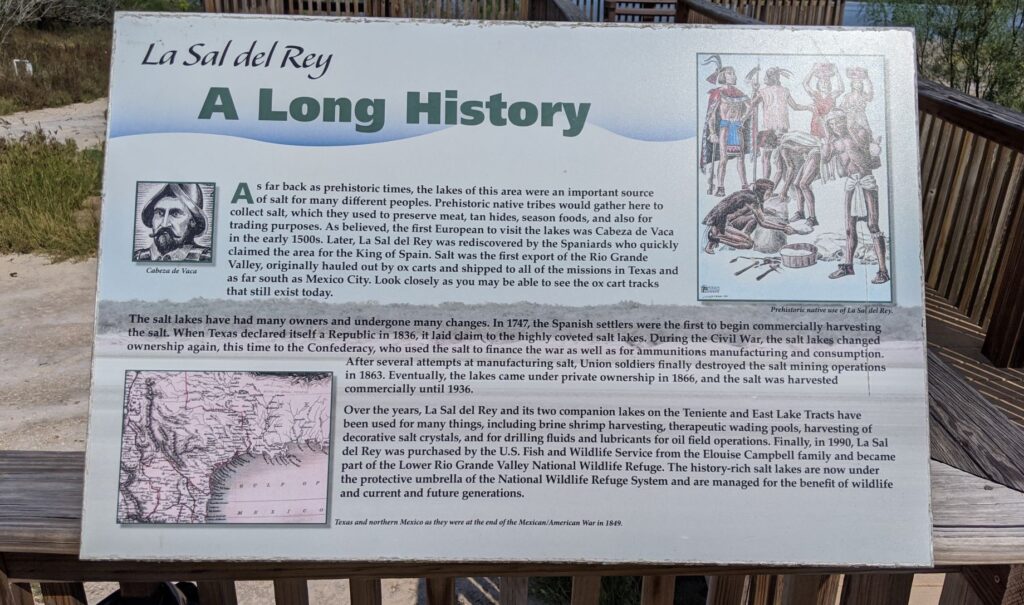
One of the less frequented places that we visited was La Sal Del Rey (trans. The King’s Salt), Lower Rio Grande Valley NWR, located in the northeastern corner of Hidalgo County (Fig. 1, #19). This area of subtropical thorn scrub surrounding a large saline lake, produced a number of waterbirds, including our only sighting of Wilson’s Phalarope.

The semi-arid habitat was also good for reptiles, e.g. two Sceloporus spp., Texas Horned Lizard (Phrynosoma cornutum) and Texas Spotted Whiptail (Cnemidophorus gularis).
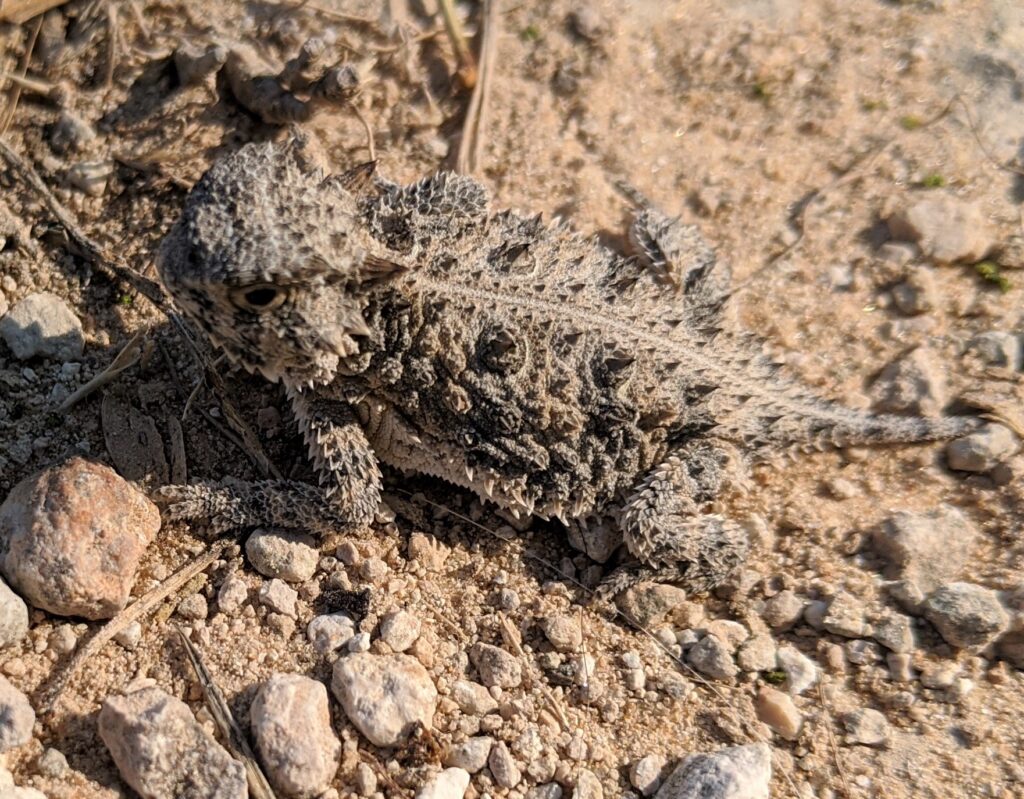
Most amusing were the dung-rolling beetles (Onthophagus gazella) I captured on video, as they were transporting boluses of fresh javelina (Pecari tajacu) droppings along the main trail.
There was still much more to see in the RGV but after seven days of a nearly nonstop birding schedule, it was time for me to begin the long drive home.
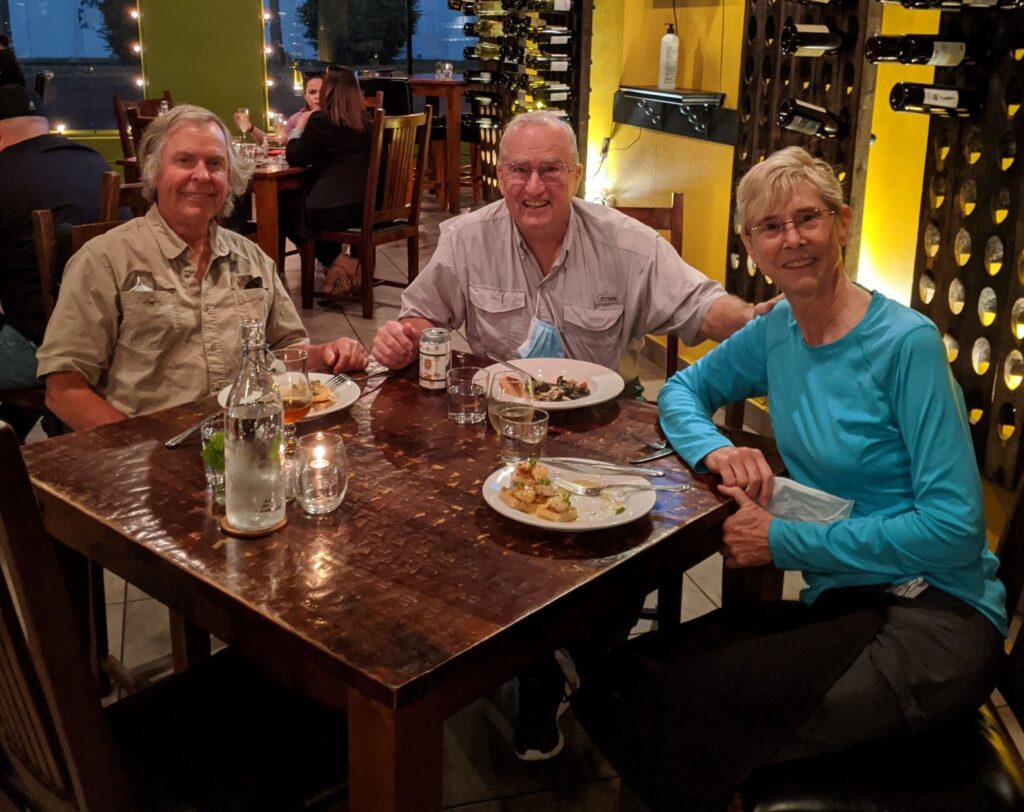
I would again be traveling through southwest and the Texas panhandle, but with two overnight stops; in the Texas hill country around Ingram, and Pecos, TX, on the way to the relatively remote and little visited, Guadalupe Mountains National Park, in the Texas Panhandle bordering New Mexico.
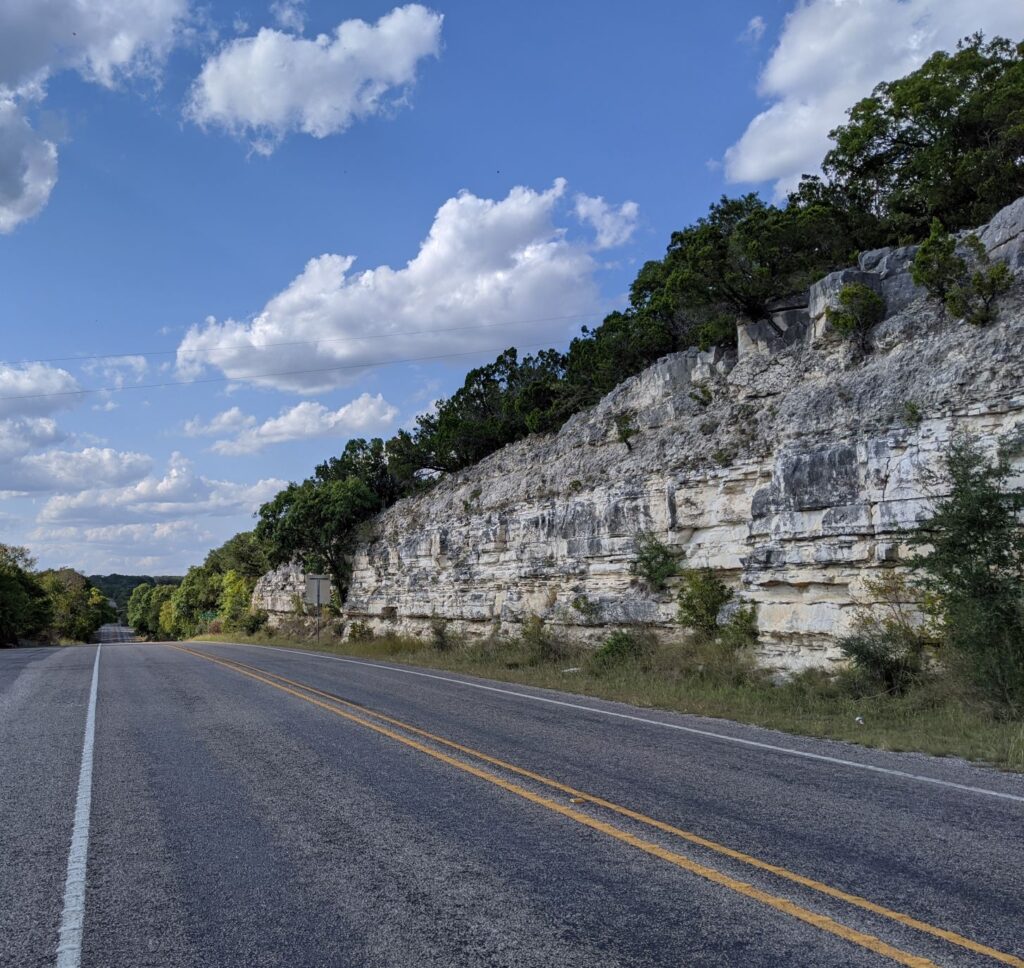
I had briefly explored the secondary roads around Ingram during the incoming part of the journey, following an overnight stay in Ft. Stockton, TX. There were several historic forts along this route through the hill country, presumably established to protect settlers, who were sometimes attacked by Indians (e.g. the Dowdy family in the Guadalupe River area).
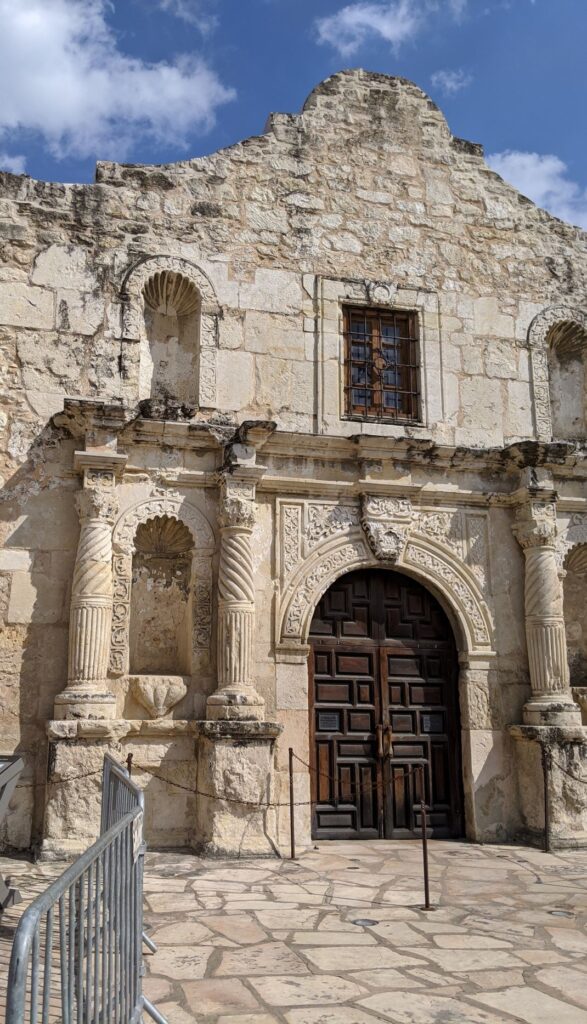
Indeed, much of Texas history seems centered on armed conflict, from local skirmishes with Native Americans to full scale military invasions, e.g. the Alamo. Even today, having a loaded gun in the car glove box would hardly surprise a Texan. These folks, though decent and well mannered with strangers, are always ready for a good fight.
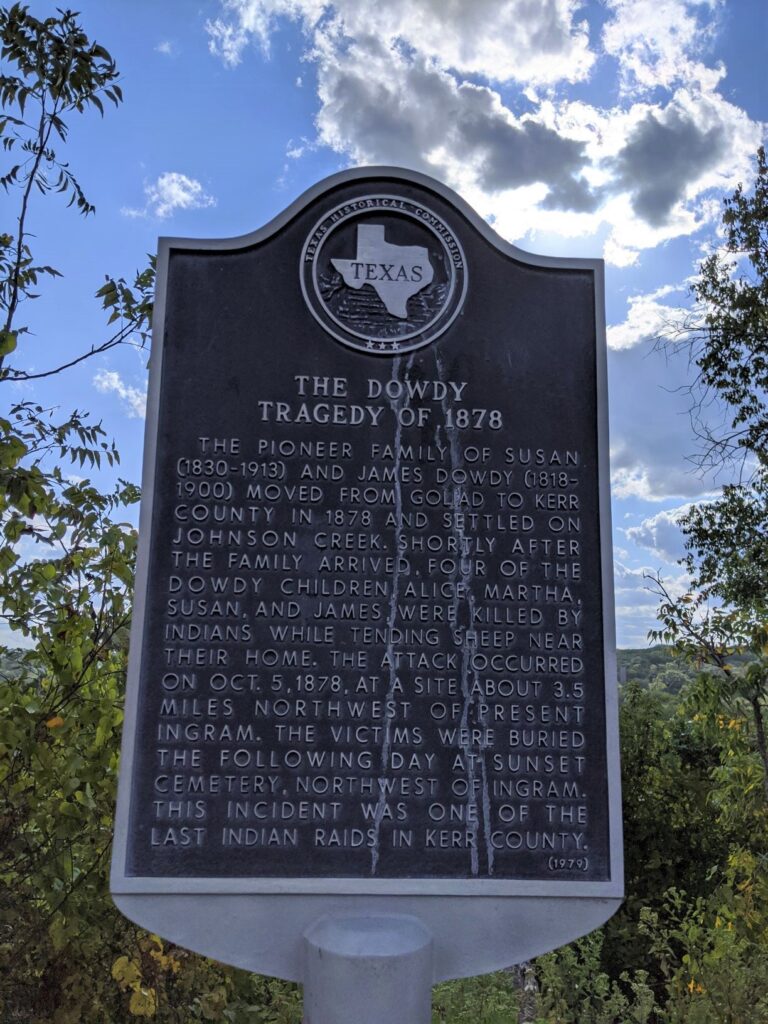
Without a pressing schedule for returning home, I stayed overnight in Ingram, TX and birded there the following morning. The only limitation I faced was the absence of Tesla supercharging stations in this area. In fact, Ingram was completely without an electric car charging station of any kind.
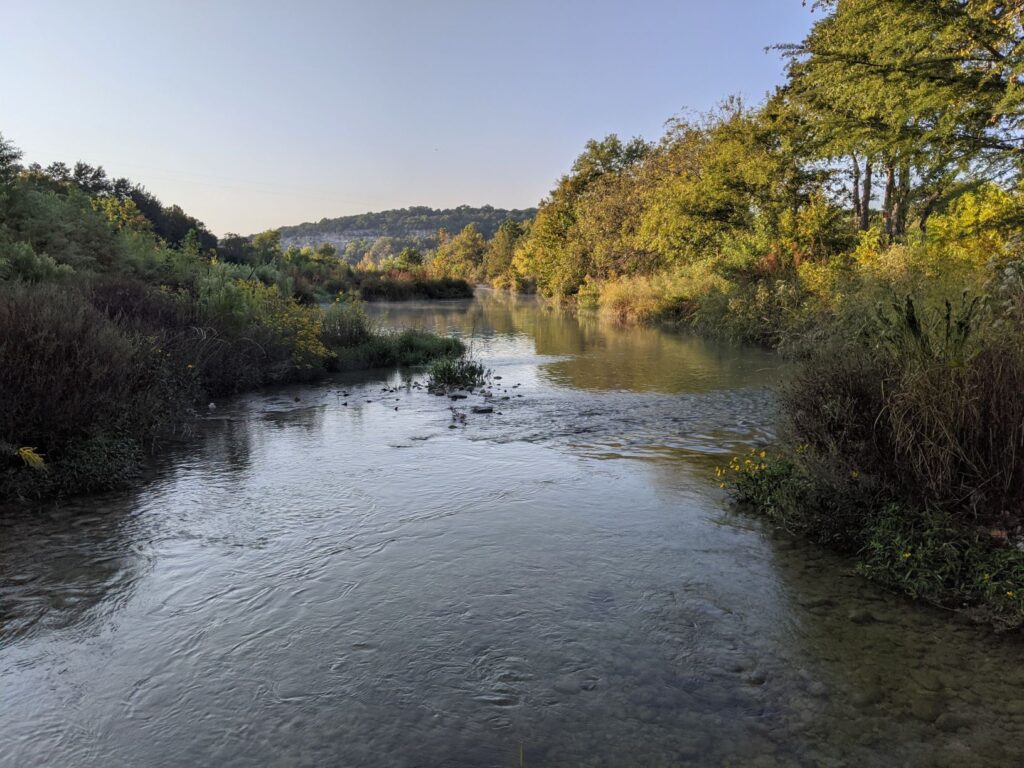
There was only one Tesla charging station in the hill country region and it was near the rural township of Hunt, well off the main highway at a ranch house cafe with decent food but no lodging. Evidently, when the Tesla corporate geographers were planning strategic locations of charging stations in Texas, this popular and scenic area was overlooked. The charging facility near Hunt was a slow (10-14 mph), 220 v Tesla ‘Destination Charger,’ that required me to wait about four hours for enough juice to make it to the Tesla supercharger station fifty miles away in Junction, TX. Luckily, while waiting for the car battery to charge, some interesting birds turned up; one of them, Northern Roadrunner, was new for my trip list.
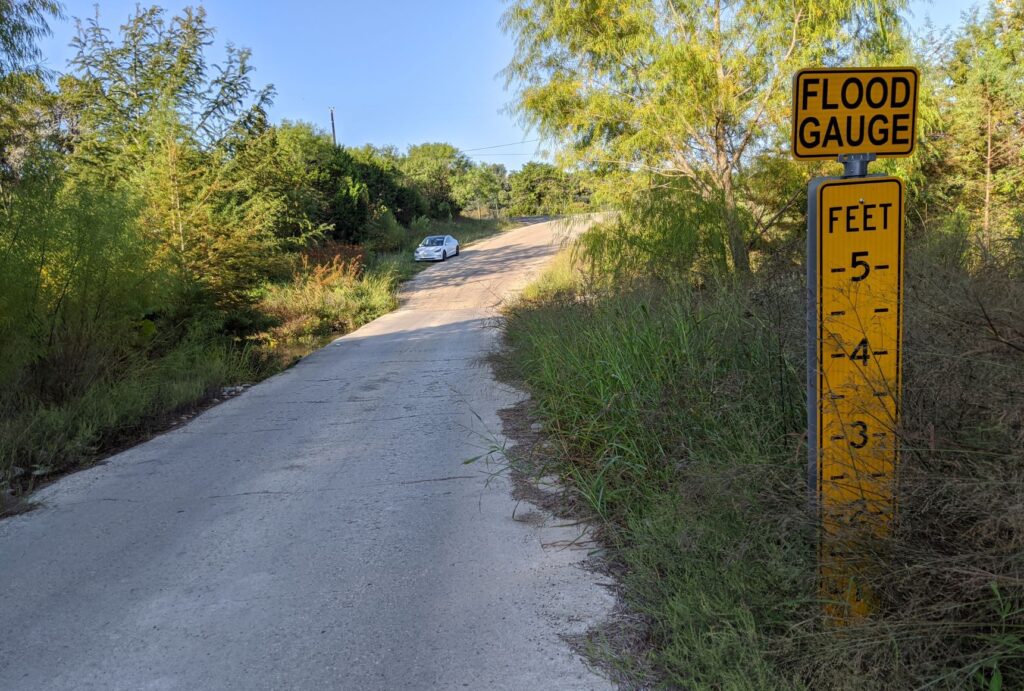
Along HWY 27 near Mountain Home, early the following morning, I found a promising looking side road that crossed a riverine patch surrounded by ranchland. Luckily, it hadn’t rained recently and the river crossing was dry. Glancing at the large black numbers on the flood gauge, I wondered how the local ranchers managed to get through during the rainy season. A couple of them passed by, waving to me as I birded the roadside. Most of the birds along the stream and in adjacent ranchland, I had encountered elsewhere in Texas. The exceptions were, Zone-tailed Hawk and House Wren.
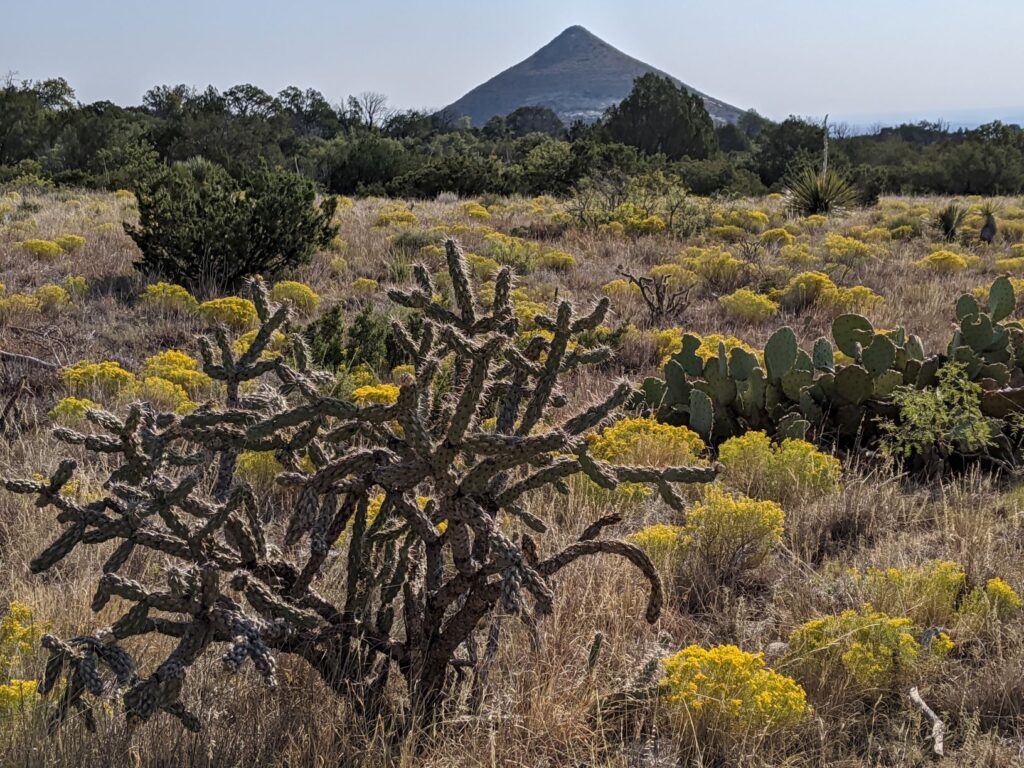
Nevertheless, having had a good night’s rest, an early birding adventure, and sufficient battery charge, I was ready to head north for an overnight in Pecos, TX and drive to Guadalupe Mountains National Park the following morning.
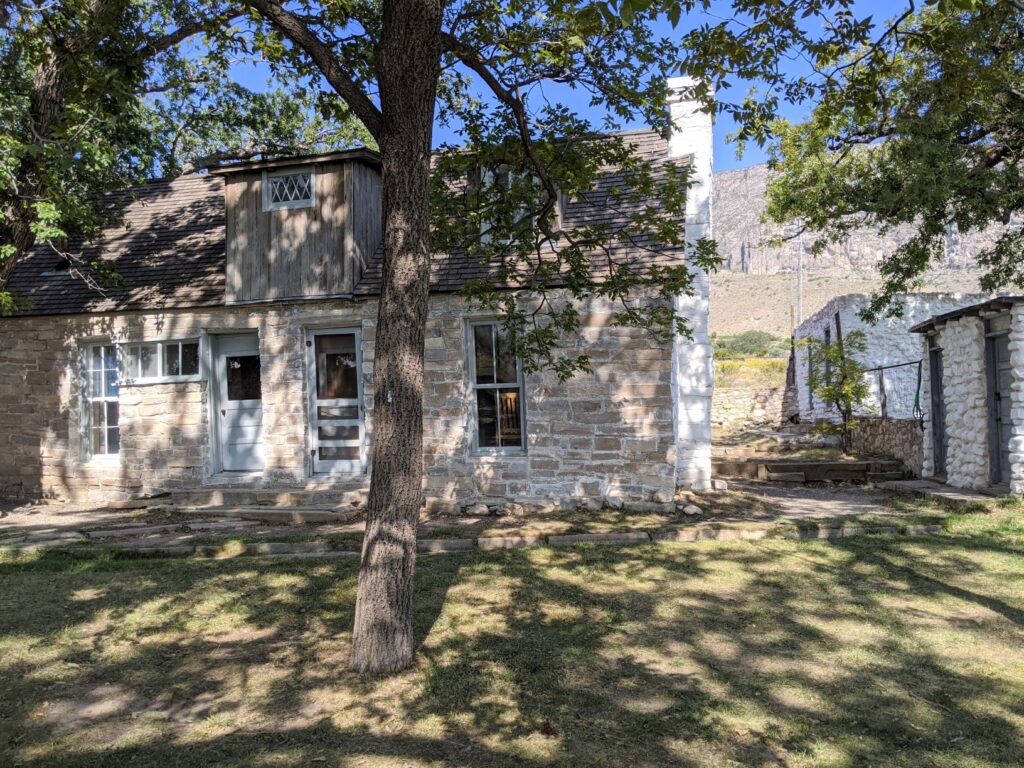
I arrived at the southeastern section of the park around 0930 hrs. and drove about 0.5 miles on a gravel road to the Frijole Homestead.
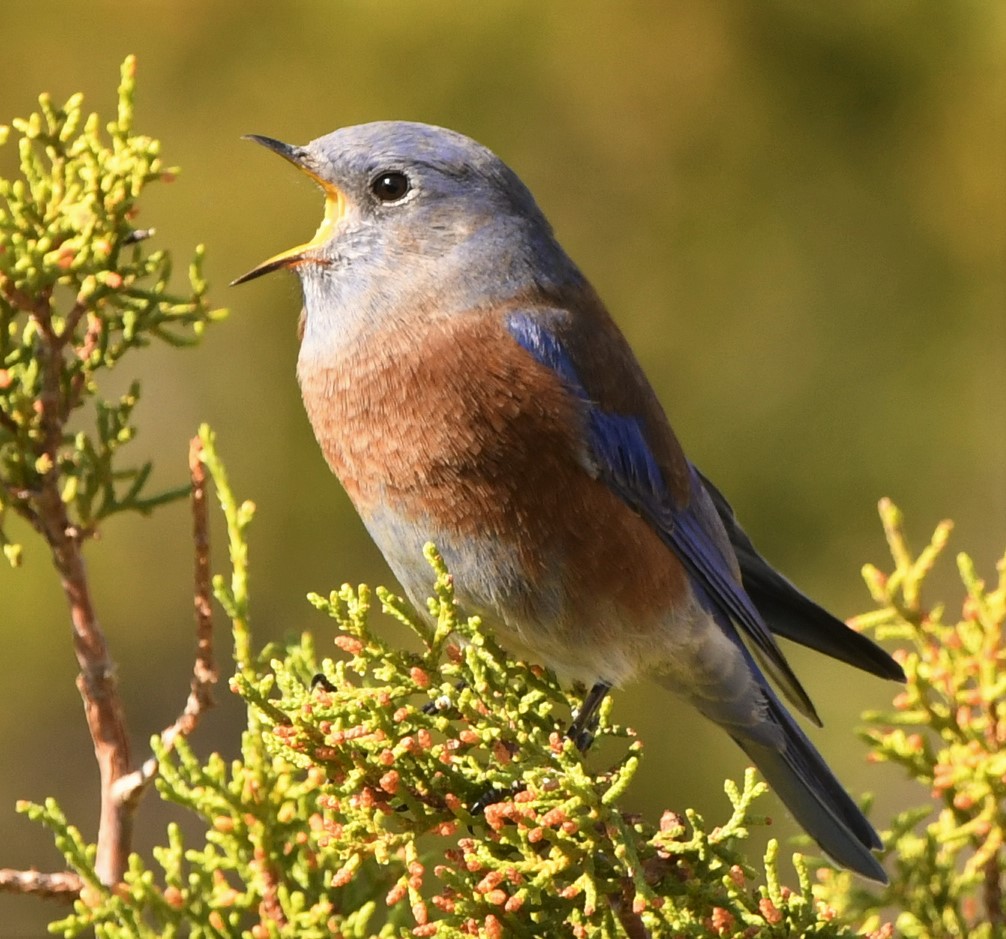

There were only a few other visitors in this area, which had natural springs and abundant bird life.
From the homestead, a trail led past seepages and a pond surrounded by a dense marsh.
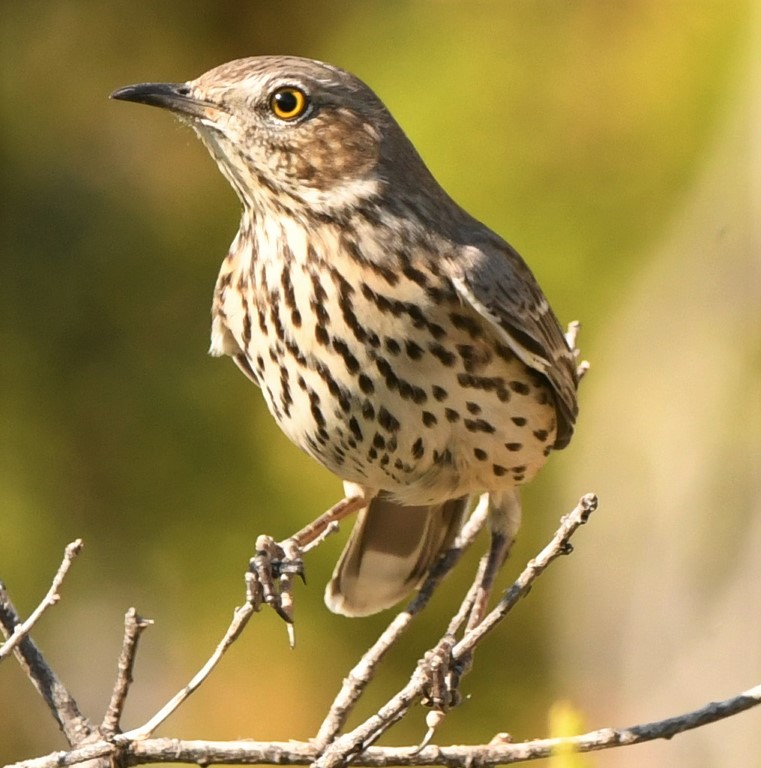
Birds were drinking and bathing in the seepages, allowing closeup observations and photography. Within about forty minutes, I had seen nearly thirty species, including several new birds for my Texas trip list, e.g. White-throated Swift, Acorn Woodpecker, Hermit Thrush, Western Bluebird, Sage Thrasher, Canyon Wren, Woodhouse’s Jay, Juniper Titmouse, Canyon Towhee, Spotted Towhee and Green-tailed Towhee.
Two other noteworthy stops in northwest Texas, involved brief walks near charging stations and/or a hotel where I spent the night, i.e. Fort Stockton, and Ozona, TX. The latter location featured a classic old Texas residential neighborhood adjacent to largely vacant fairgrounds. There were a few interesting birds flitting about, including Ladder-backed Woodpecker, Vermilion Flycatcher and Scissor-tailed Flycatcher. Those birds were seen during my first stop in Ozona (September 26); the second visit on October 5, was cool, windy and much less productive. Likewise, my first overnight stop in Ft. Stockton was the most productive for birds.
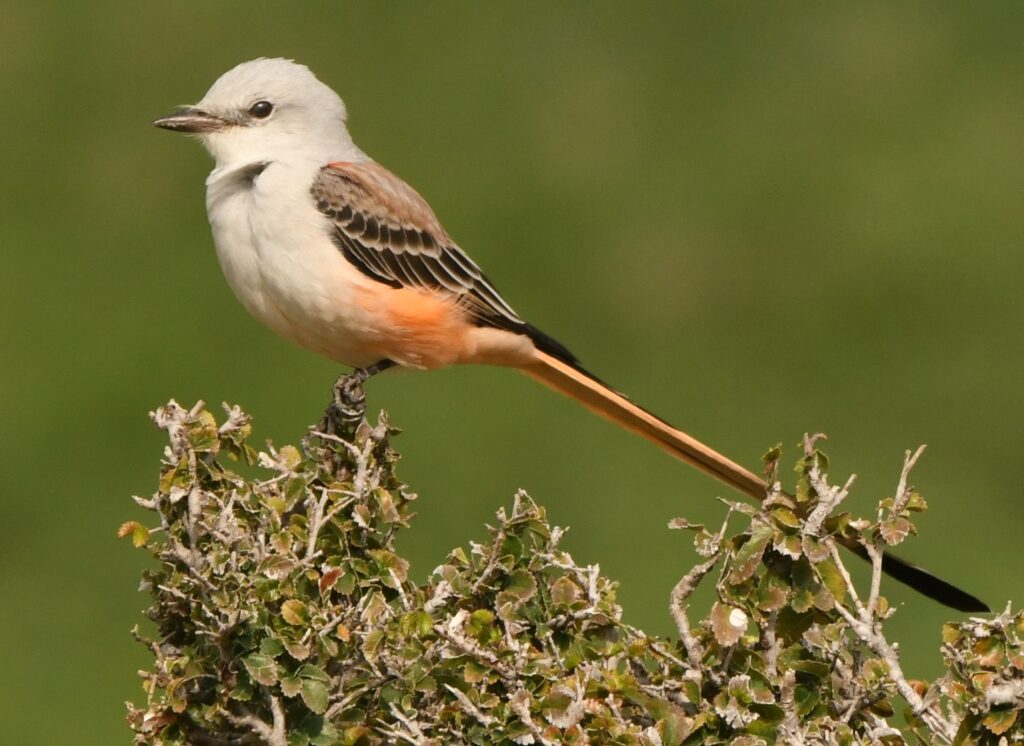
Behind the Ft. Stockton hotel was a large patch of thorn scrub bordered by a watered lawn around a church. There, Clay-colored Sparrow outnumbered every other species except White-winged Dove.
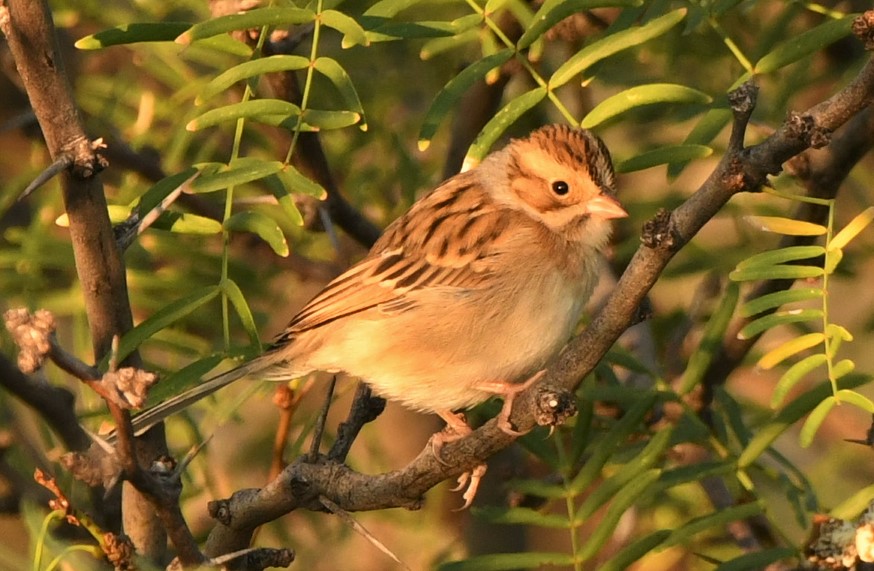
Late in the afternoon of October 6, I rolled into the border town of El Paso and promptly took a room in a hotel across the street from a Tesla supercharging station. My Texas birding adventure was now in the rear view mirror – a collection of fond memories, notes and photos, as I looked forward to spending the next few days in southeast Arizona.
